Article Note: This article “14 Mobile App Development Trends to Keep an Eye on in 2022-2023” was first published on 7th March 2022. We have last updated this article on 19th March 2022 with fresh information.
The global pandemic has fuelled the already developing shift towards mobile-first solutions in all spheres. With modern consumers using their smartphones to make their utility payments, communicate with their colleagues in multiple messengers, and find new social contacts, this increases the demand for the quality of the apps providing this functionality. People want their operations to be safe, secure, and private due to the multiple recent scandals related to GDPR violations, security breaches, and other adverse trends in this sphere.
The mobile application market worldwide is expanding at a never-before rate. The revenue of mobile apps is getting higher with the increasing number of smartphone users. This growth offers innumerable opportunities for mobile app developers. The app developers can improve the user experience of their apps by including some of the latest technologies.
At the start of 2022, it is time to plan for the future by considering the growth in application development. It’s time for you to consider various opportunities and development trends that would improve the UI and UX of your existing mobile app significantly. Moreover, these trends help you build futuristic mobile apps.
To win new customers and secure the loyalty of existing ones, app developers need to embrace the most advanced technological solutions ensuring user convenience and complying with the strictest cybersecurity standards. To make your task easy, we have done the research and found the best mobile app development trends. Before we move on, let’s get an answer to one essential question.
Why do you need to look into the future?

People love to access new technologies efficiently on their mobile apps. Therefore, you should constantly look for user behavior and the market to gauge how the new technologies evolve. Integrate the trending technologies in your mobile apps to impact your business growth.
Besides this, your app must provide a superior user experience, which helps you to improve customer retention. The higher the customer retention rate would lead to more revenue.
Recommended for you: Why Mobile Apps are Gaining Importance in Healthcare Sectors?
14 rising trends in mobile app development

This year, you will find many technologies on the fringes to get mainstreamed. Consumers will increasingly adopt AI (artificial intelligence), AR (augmented reality), VR (virtual reality), 5G, and others to get a better experience.
We have listed some of these top trends that businesses and startups consider for mobile app development.
1. 5G support
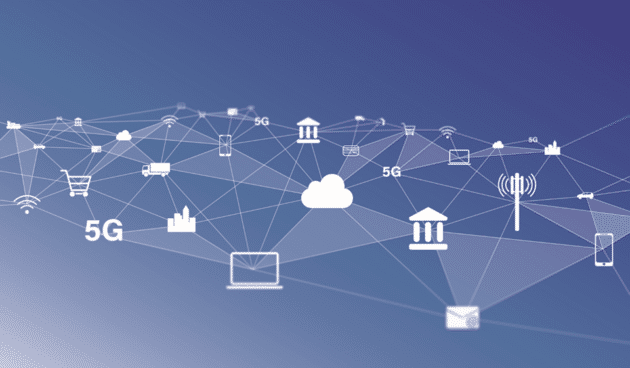
More and more countries are adopting 5G technologies. According to some recent predictions from Gartner, the one-year growth of the 5G network amounted to 5.4 billion USD in 2021. At this speed, it is already evident that the new technology will largely replace its older rivals by the end of the 2020s. The reasons for that include the increasing demand for broadband connectivity stimulated by COVID-19, remote work, and the growing popularity of streaming services.
According to Statista, the worldwide market for 5G technology would reach an astounding $620.72 billion by the end of 2030. 5G technology offers a big jump in connectivity and may start the fourth Industrial Revolution.
5G technology provides unprecedented speed and interconnectivity, which in turn help in improving AR, VR, and the Internet of Things (IoT). It will have massive implications in various sectors, such as health, education, transportation, etc. Additionally, thanks to the higher radiofrequency and shorter wavelength of 5G, geofencing and geo-targeting required for mobile apps would be more precise.
For app developers, this means that most of the users will expect native support of 5G and the advantages it can offer.
Some of them include:
- Better visuals due to greater traffic capacity.
- In-depth personalisation based on machine learning and AI solutions.
- Greater horizontal connectivity.
- A gradual shift towards cloud-based data processing.
The last element may seem especially lucrative to developers. The increasingly popular GeForce NOW service by NVIDIA effectively allows its subscribers to play the latest PC games without owning a top-of-the-line gaming PC. All necessary hardware is rented from the company datacentres with user experience being delivered in the form of the low-latency streaming of the resulting video.
The application of similar principles to mobile apps will allow people to use resource-intensive applications without fully installing them on their smartphones or leverage some of the accompanying workloads to corporate servers. This opens multiple new opportunities for developers willing to accept and support these trends.
2. IoT and cloud
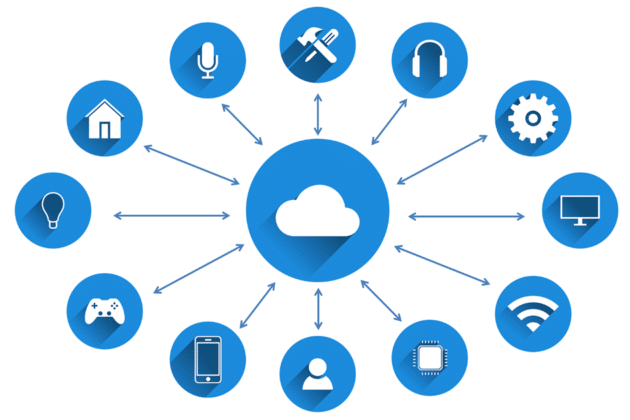
IoT is another technology you should look forward to when considering mobile app development trends for 2022. If we look at the report by Statista, we will find that the market of IoT would expand to an insane $ 1.1 trillion by 2023.
As IoT is cloud-based, it offers innumerable benefits. These benefits include improved security, high efficiency, lower operational costs, and better connections to other platforms through APIs.
3. Artificial intelligence (AI) and machine learning (ML)

Machine Learning (ML) and Artificial Intelligence (AI) shorten the app development time and provide a personalized user experience. These technologies can help you to reduce errors made by human programmers. Therefore, extensive use of AI and ML allows you to create a highly secure and robust mobile app with minor bugs.
The predictive analytics used by AI with the sophisticated algorithm of ML are some of the top technologies you must include in your app development. AI and ML can leverage speech recognition, navigation, and natural language processing. Furthermore, the behavioral algorithm of ML can minutely analyze user behavior to find suspicious activity, fraud, or potential information breaches.
4. Mobile commerce and cybersecurity
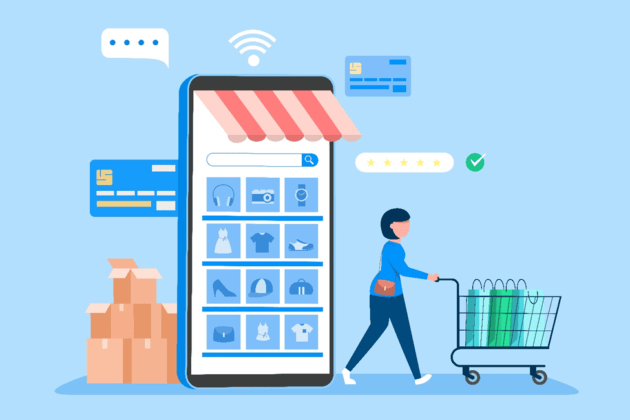
Online shopping has increased dramatically in the past two years due to pandemics. Businesses have identified this growing trend and responded by creating progressive web apps that offer a great shopper experience.
Mobile commerce:
Mobile commerce or M-commerce is distinct from e-commerce as it involves buying through a mobile app unlike a mobile web page in e-commerce. According to a report by a business insider, this market would be around $ 22 billion by 2022.
The growth of fintech apps as well as the introduction of Facebook Pay, Apple Cards, and other physical and virtual products clearly demonstrates that mobile market leaders are highly eager in winning the customers of traditional brick-and-mortar banks. With users spending a lot of their free time within their favorite apps, the need to quit them to make payments is a disruptive experience that is not enjoyable to most audiences.
In-app purchases are quickly becoming the new norm; mobile wallets rapidly becoming a preferred alternative to traditional debit and credit cards. Recent announcements from Apple suggest that the company will offer point-of-sale products in 2022. This will allow any user to transform their iPhone or iPad into a payment terminal for their business. These app development trends clearly demonstrate that mobile transactions will become a new norm in the 2020s and will potentially replace traditional solutions in this sphere.
For app developers, this presents a number of opportunities including the development of peer-to-peer payments made within their products or app-specific mobile wallets. If you are offering a subscription-based product, people may prefer to store a fixed sum of money on a specialized account within it rather than grant your software full access to their main debit or credit card. Hence, most developers will need to become fintech specialists to a certain degree. This will ensure the safety of their users and offer them the convenience they expect.
Cybersecurity:
With that being said, consumer data security is as important as user experience. Because no one wants to accidentally lose their sensitive information or money.
Every app developer needs to focus on the following areas to guarantee their client safety and satisfaction:
- Openly discuss the methods and solutions you implement to protect your customers.
- If possible, integrate biometric and two-factor authentication for all in-app purchases.
- Regularly perform internal audits to ensure compliance with GDPR and other applicable regulations.
- Understand the kinds of data you really need and avoid the collection of unnecessary customer information. Keep in mind that you will be responsible for its storage, processing, and confidentiality. This exposes you to higher risk levels in the case of any accidental security breaches.
You may like: 15 Real Challenges in Mobile Application Development.
5. Instant apps and progressive web apps (PWA)
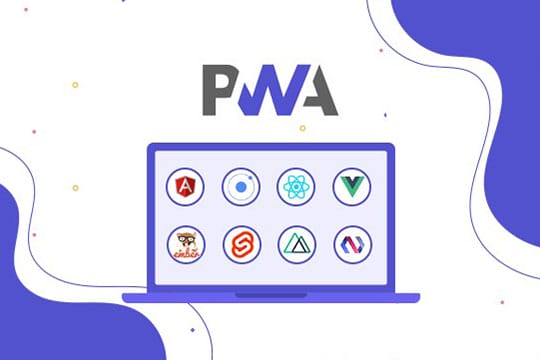
Instant apps are becoming more popular as they allow users to check apps before downloading & installing them on the smartphone.
Similarly, PWAs have also gained massive popularity as they offer the users something distinct from web pages and native apps. These apps fill the gap between native apps and the webpages. They offer you advantages like low dependency on Internet connections, occupying less space, automatic updates, faster loading, and faster development time.
Due to these benefits, some of the leading brands worldwide have made progressive web apps.
6. Wearables

Wearables have transformed the entire world. People are now using different types of wearables such as earbuds, smartwatches, etc., to connect with the world. It is because Wearables bring about a high degree of convenience for the users; it allows them to receive messages and notifications on their smartwatches. Furthermore, fitness tracking wearables have also seen a great upswing; awareness of a healthy life has percolated in the minds of the general population.
Due to the wearables, there would be an increasing demand for mobile apps needed to operate these devices. Wearable technology has a major impact on the two industries: healthcare and sports. Various other industries would also adopt wearable technology as per the need.
Shortly, we would see the integration of wearable technology in a vast number of devices in our surroundings.
7. Predictive analysis
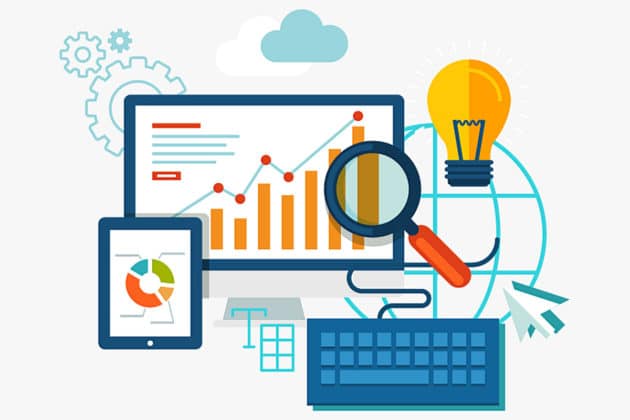
The predictive analysis plays a massive role in personalizing the shopping experience of individual customers.
Predictive studies use techniques like data mining, machine learning, and statistics to predict future events based on available data. The information that you gather from the analytics can be used to either remove or add a feature that your user may like or dislike.
The new trend helps you customize different elements of the mobile app as per the requirement or buying behavior of the customer. This technology has widespread use in the retail business and health apps.
8. Apps for foldable devices

Foldable mobile devices are making a solid comeback. According to Statista, the total shipment of a foldable smartphone by 2022 would be 50 million and by 2025 would cross-section 75.6 million units.
Therefore, when you create a mobile app, ensure that it works flawlessly on a foldable device. The larger screen of a foldable smartphone offers more space. It allows you to provide an immersive experience to the app user by providing more details. Furthermore, foldable smartphones also enable you to provide multi-window functionalities so that the user can multitask simultaneously.
9. Edge computing

Edge computing is the new avatar of the cloud. In this, the cloud is positioned near the user.
In edge computing, several computational needs of the user are either processed on the nearest station (also called the edge of the cloud) or locally.
With the help of this technology, your smartphone would become a part of the cloud, which in turn would reduce the latency issue. It has huge implications across various industry verticals. It would help edge along with 5G technology accelerate the adoption of IoT and autonomous cars through edge-powered smartphones. The improving B2B mobile trends also reflect the increasing importance of edge.
Recommended for you: 11 Best B2B Portals for All Emerging Entrepreneurs for Success.
10. Blockchain technologies

As of early 2022, the legal status of cryptocurrencies in many countries remains controversial with some states going as far as prohibiting them completely due to the associated risks of tax evasion, shadow economy growth, and money laundering activities. However, all experts agree that blockchain elements offer unprecedented data safety by leveraging security from a local device to the level of a shared database.
As more and more people buy and sell through their smartphones, securing classified data has become very important. Blockchain offers a robust and secure solution to keep your data safe and share easily across multiple supply chains. According to a report published by markets and markets, the blockchain market would grow to $67.4 billion by 2026. Therefore, if you are looking for a secure payment gateway for your mobile app, you can look at blockchain technology as a great solution.
For app developers, this means that they can decentralize many operations and make sure that hackers cannot get access to sensitive data by gaining control of a single network node. With timestamps being attached to every transaction and records of all transactions being stored on multiple devices, the intruders are effectively barred from manipulating critical information or stealing user traffic. Here are some obvious advantages of making your app blockchain-ready in 2022.
The advantages:
- Data can be stored and transferred in a decentralised manner to avoid dependence on centralised servers vulnerable to hacking.
- Data manipulation can only be performed by authorised users with all of such operations being fully transparent and easily traceable.
- The levels of cryptography and encryption algorithms in blockchain-based systems are substantially higher than the ones presently used in mobile apps.
- Modern development platforms such as React Native allow you to easily integrate blockchain elements into cross-platform apps ensuring a seamless and secure user experience.
11. Beacon technology
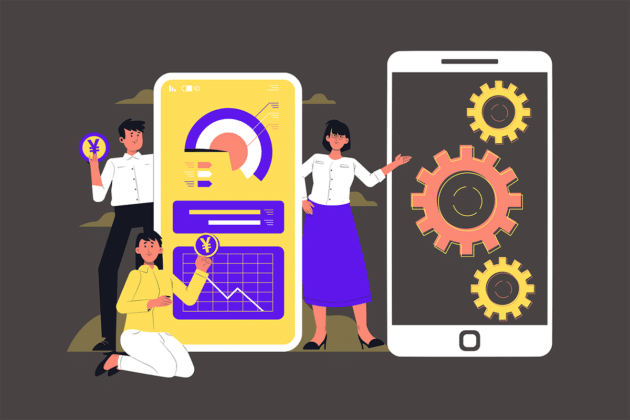
The beacon technology was launched in 2013. It is popular in mobile app development, especially those that are related to retail businesses. This technology allows the user to get location-specific real-time alerts for deals and a mobile payment option. Businesses can utilize beacon technology to extract essential data to know buying patterns and preferences of their customers.
It has been observed that people are more likely to look at a product and engage with it if it is advertised by using a beacon. Moreover, businesses can provide a personalized shopping experience as per their past buying behaviors.
12. Augmented reality (AR) / virtual reality (VR)
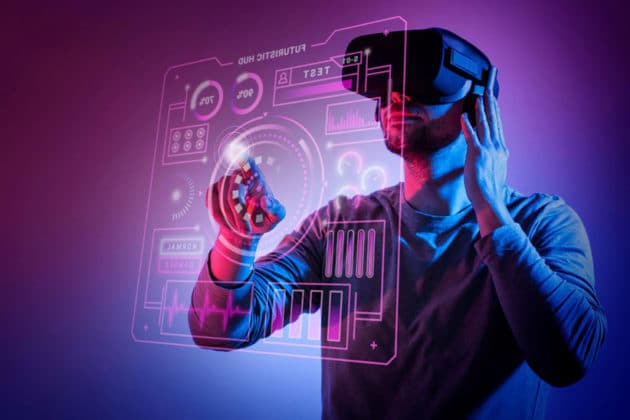
For providing a better user experience, mobile app development is increasingly relying on AR/VR technology. Read the market research done by Statista; you will find that by 2023 the worldwide AR/VR market would cross $160 billion.
Widespread adoption of AR/VR technology would ensure a more personalized UI. For example, users can see how a piece of furniture will look in their living room virtually, or even find how a new cloth would look on them by using AR/VR.
While the advancement of AR and VR has been relatively slow throughout the previous decade, the steps taken by Facebook in the 2010s may quickly change the existing status quo in this sphere. In addition to purchasing the Oculus company and developing some of the most affordable and popular VR headsets in the market, they have recently changed their name to Meta to create an immersive experience embracing both augmented and virtual reality technologies.
Although this vision may seem like something of a distant future, there exist multiple examples of more practical applications of both concepts.
Examples:
- Some furniture brands including IKEA already allow you to visualise their products in your real rooms via AR to see how they would fit your interior.
- Many museums and retail stores allow you to see extended descriptions of items in front of you by looking at them through your smartphone cameras.
- Such industry-leading institutions as Lloyds Banking Group are gradually adopting VR as a supporting tool for interviewing, skills training, and onboarding procedures.
- More and more entertainment content is shot in a 360-degree format allowing viewers to virtually visit various places and events.
Considering the earlier mentioned 5G advancement, the integration of augmented and virtual reality ideas can become widespread since they offer unique advantages for both entertainment and traditional retail. Hence, app developers may be wise to start exploring these technologies and experimenting with them right now.
You may like: Everything You Need To Know About Developing Augmented Reality Mobile Apps.
13. Chatbots

Chatbots would become commonplace in mobile app development. According to Statista, the chatbot industry is growing like never before. By 2027, it would cross the $450 million mark. Chatbots offer you several advantages. Chatbots can take care of 68.9% of chats from initiation to conclusion, as per startupbonsai.com. The study shows that more than 40% of worldwide Internet users find it easier to interact with chatbots compared to virtual agents.
Furthermore, advancements in Artificial Intelligence, Natural Language Processing, and Machine Learning have made chatbots significantly more effective.
Communicating with highly advanced bots has become more organic because they use semantic search, voice recognition, and sentiment analysis. Apps integrated with chatbots have broader applications in fields, such as education, health, IoT, and many more.
Modern chatbots are still seen as imperfect customer service instruments by some users. But, they already possess a number of unique advantages.
Advantages such as:
- They are available on a 24/7 basis.
- A chatbots platform can service any number of users simultaneously.
- The cost of this technology is affordable to most small and medium businesses.
- The development of machine learning and AI will allow chatbots to offer communication personalisation and multi-language support to all users.
- Chatbots allow users to automatically open helpdesk requests and get instant solutions to many customer support queries without waiting for an ‘official’ response from the customer service department.
Moreover, customer readiness for chatbots is progressively fuelled by the increasing popularity of AI-powered assistants such as Siri as well as smart speakers including Amazon Alexa. With users getting accustomed to using voice commands to find movies on Netflix or music on Spotify, it is only a matter of time until they fully embrace voice-assisted search and communication with brands in the online environment.
14. Personal smart hubs

New technologies have made your smartphone app a Smart hub for IoT-enabled devices, which uses the app as a type of API.
The apps that act as a smart hub can seamlessly interact with all connected devices and help you to use your smartphone as a central dashboard. This technology will help you start, stop or regulate various devices through these apps without physically touching them. You can include a voice assistant function that would allow users to control all connected devices through voice commands alone.
Some more statistics
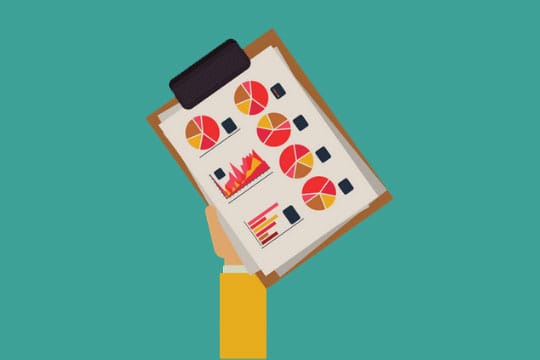
The ongoing shift from traditional PCs and laptops to portable devices means that the app market will continue its evolution and expansion in the 2020s. This opens new opportunities for mobile app developers. More and more consumers will be using apps for ordering food, making daily payments, purchasing tickers, or contacting their friends and relatives. Moreover, modern smartphones are already powerful enough to be used for professional tasks.
In November 2021, Adobe launched its Photoshop Express version of its popular software that can be operated from any device. Similar trends are seen in video and image editing as well as text processing.
With that being said, Google Play and App Store already have more than 5.5 million applications available to users. With this level of competition, you need to be really unique and authentic in order to stand out of line and attract the attention of modern smartphone owners.
You may also like: 8 Stages/Phases of Mobile App Development Life Cycle.
Final words

The lockdown that we have faced due to the Covid 19 pandemic has accelerated the digital economy to new heights. Now, the industry is looking towards providing a highly personalized consumer experience. Moreover, many companies have adopted different trends for mobile app development.
If you want the successful retention of your app users, then you must incorporate these trends into your mobile app development. It will help you retain your existing user base. It will also attract new ones, which in turn would positively reflect on your revenue stream.
The trends discussed above can be viewed as some of the most powerful ways to achieve this differentiation. It provides the level of user experience most developers cannot offer to their clients. At the same time, these elements are relatively easy to implement and can be integrated by most companies. The app market saturation levels are far from those of most traditional retail sectors. So, launching a cutting-edge app can easily make you a leader in your niche. It helps you build solid revenue streams.
We have written this article in association with Anna Clarke and Ravi Makhija. Anna Clarke is the owner of PhD Centre and provides expert Ph.D. thesis writing services. She specializes in research, content, and article writing on various topics, including education, marketing, and technology.Ravi Makhija is an entrepreneur, an IT professional, and a tech geek. Founder & CEO at Guru TechnoLabs - an award-winning and globally trusted web and mobile app development company. Loves writing about new technologies and the latest trends in the IT field. Follow him: LinkedIn | Twitter.
 Ravi Makhija is an entrepreneur, an IT professional, and a tech geek. Founder & CEO at Guru TechnoLabs - an award-winning and globally trusted web and mobile app development company. Loves writing about new technologies and the latest trends in the IT field. Follow him:
Ravi Makhija is an entrepreneur, an IT professional, and a tech geek. Founder & CEO at Guru TechnoLabs - an award-winning and globally trusted web and mobile app development company. Loves writing about new technologies and the latest trends in the IT field. Follow him: 




